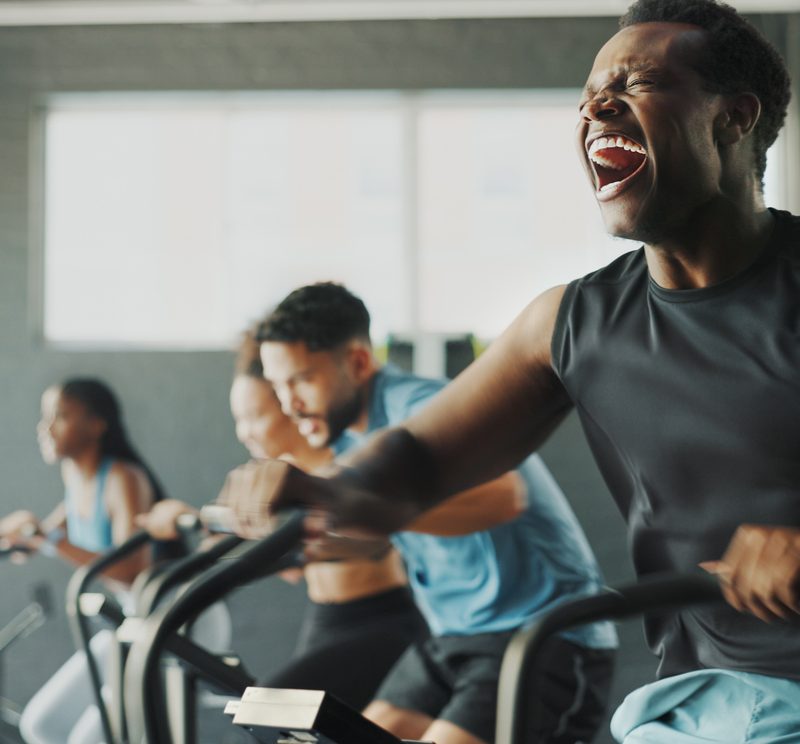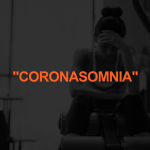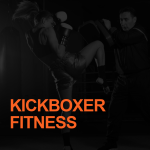
In the competitive sports arena, athletes can encounter a multitude of stressful situations from a variety of different sources. Regular exposure to such stressors can negatively affect an athlete’s health as well as his performance. However, some studies have demonstrated how certain stressors, including injuries, can channel athletes towards more positive outcomes (referred to as “stress-related growth”). Read on to learn more about how stress-management techniques can help a client succeed, just as much as his exercises and training.
The Stress-laden World of Elite Athletes
An athlete’s inability to manage the stress and anxiety that inevitably comes with competitive sports can sometimes lead to negative effects on psychological variables such as self-confidence and acuity of attention. The major sources of stress that have been reported by sports performers include fear of failure, social evaluation by others (particularly the coach, as well as peers, teammates, family), lack of readiness to perform, and loss of internal control over one’s environment. The potential effects of such situations depend greatly upon three factors: the athlete’s personality characteristics (rigidity/flexibility, his perceived locus of control, trait anxiety, achievement motivation); his personal history of coping with both severe and minor stressful situations; learned coping strategies and social support/resources. For purposes of this article, we will direct our focus on how possessing a broad repertoire of coping strategies can mitigate stressful situations more effectively, propelling an athlete towards achieving optimal levels of anxiety, in order to positively impact performance.
Improving performance requires reducing cognitive anxiety and negative thoughts, with the ultimate goal of seeking a place of optimal somatic (full-body) anxiety. However, it appears that sport-specific anxiety serves as a better predictor of performance than generalized anxiety. The correlation between anxiety and performance also takes on different trends depending on the specific sport: anxiety tends to bring on negative impact in sports that require high levels of concentration/ motor coordination; contact sports typically align with high levels of cognitive and somatic anxiety; and sports involving individual scores (those based on judges’ assessments) correlate to high levels of cognitive anxiety. Self-confidence and self-efficacy also play roles in sports performance; athletes with an abundance of these traits tend to possess a heightened ability to perceive when they need emotional regulation, thereby creating opportunities for athletes to learn how to manage negative emotions more effectively.
Navigating the Maze of Coping Strategies
The effects of coping strategies on performance have been extensively explored by scientists via the transactional model of stress (Cognitive-motivational-relational theory, or CMRT). This theory proposes how, when faced with demands, the athlete can perceive this input in one of two ways: the situation as an obstacle or threat (anticipated loss), or as a challenge (anticipated mastery). After this, his secondary appraisal allows him to access his learned or available coping strategies, which will determine how well the athlete feels he can govern the situation at hand and its accompanying emotions.
We can differentiate an elite athlete’s typical coping strategies into the following categories ~
- mastery coping – means through which the athlete attempts to suppress the stressor by taking control over the situation (problem-focused coping and task-oriented coping)
- internal regulation coping – here the athlete tries to manage internal responses to stress (acceptance, emotion-focused coping)
- goal withdrawal coping – situations where the athlete abandons all attempts to achieve his goal (disengagement-oriented coping)
These strategies can wield tremendous power over sport outcomes, whether that involves improving/worsening performance, facilitating/hindering the achievement of goals, or even modifying emotional experiences. As we might expect, problem-focused coping strategies correlate positively with performance, whereas disengagement-oriented and emotion-focused coping strategies have a negative association with performance and a heightened alignment with negative emotions.
Eustress, the Positive Side with Benefits
Based upon the Greek word “Eu”, a prefix for good, endocrinologist Hans Selye developed this term/concept, referring to good or positive stress. When channeled properly, athletes can harness eustress as a means of enhancing not only motivation but physical performance as well.
Unlike distress, which we already acknowledge can have detrimental physical/emotional effects on the body, eustress still remains a challenge with which we can deal, knowing it will optimally lead to growth, achievement and enhanced athletic performance. Eustress and Distress share many common qualities: a general feeling of nervousness, an increase in heart rate and an inability to corral runaway thoughts. The difference lies in how the individual chooses to perceive his situational stress.
When we begin to think in terms of coupling eustress and endurance training, we can tap into the essence of elite athleticism, where boundaries and limitations lie in the rearview mirror as nothing more than preconceived illusions.
Eustress for Athletes
For coaches and trainers working with competitive athletes, finding a way to unlock and harness the potential of eustress can seem like discovering that the individual suddenly possesses a hidden superpower. Often a trainer must first recognize the manifestations of distress in his client, followed by challenging him and working with him to uncover the root of the distress. Only then can a trainer begin to introduce any number of stress management techniques into the athlete’s regular workout regimen.
These may include:
- Breathing exercises:by engaging in deep, diaphragmatic breathing, an athlete can help stimulate his body’s natural relaxation response, thereby reducing muscle tension and promoting an overall sense of well-being
- Neuromuscular exercises:movements that systematically contract and relax different muscle groups can help mitigate the chronic muscle tension commonly associated with stress
- Mindfulness and meditation: mindfulness practices (yoga and other such endeavors) can enhance an athlete’s ability to stay present in the moment, manage stress, and improve/sharpen mental resilience
- Sleep habits: maintaining consistent sleep patterns and creating a conducive sleep environment can significantly lessen stress
- Counseling and psychological support: when necessary, sports psychologists can provide athletes and their coaches with coping mechanisms/ strategies to navigate the mental challenges associated with their sport
Finding the Optimal Arousal Level
The Yerkes-Dodson psychological concept reflects a model of the relationship between stress and task performance. It proposes that one achieves a peak level of performance (“sweet spot”) with an intermediate level of stress, or arousal. Too little or too much arousal will lead to diminished performance. We can think of this as an inverted-U paradigm. The theory originated in 1908 and represents data culled from experiments performed on mice by psychologists Robert Yerkes and John Dillingham Dodson.
Eustress only serves as a useful entity when an athlete keeps it within healthy parameters. If eustress reaches an extreme, the athlete easily shifts into feeling overwhelmed or out of control; at this point, the eustress has decompensated into distress. The key to tapping into one’s adrenaline-pumping eustress lies in finding one’s unique “sweet spot”, or optimal arousal point, wherein he can begin to improve his athletic performance.
Keep in mind that the skill of mastering stress management takes practice. Athletes who can handle/process stress effectively perform better under pressure and possess composure during crucial competitive moments.
Mental Toughness and Motivation
Athletes who learn to navigate and conquer challenges as part of their training seem to cultivate the psychological strength/toughness they will need in order to excel during competitions. To that end, successfully utilizing eustress can help forge a symbiotic relationship with motivation and mental preparedness. Eustress fuels the motivation needed to push through barriers, ideally enabling an athlete to conquer previously insurmountable challenges/performances.
Final Thoughts
In the competitive world of sports, optimal performance requires not only physical prowess but also mental resilience. Making this symbiosis a success for the athlete requires an in-depth understanding of the interconnectedness of physical and mental well-being. Trainers and coaches can arm themselves for such work by preparing their approaches in advance of working with athletes, perhaps by consulting with sports psychologists. Only then can they help their clients develop and implement holistic strategies for managing stress. By addressing each client’s unique stressors, and implementing general as well as sports-specific stress-reducing techniques, trainers will no doubt see their competitive athlete clients enhance their overall performance, reduce the incidence/risk of injuries, and ensure a successful long-term athletic career.
A key point to keep in mind when engaging in this sort of work relates to remaining well within one’s scope of professional practice. While research has given us many theories and ideas, the limitations of such work, specifically in athlete/performance-related stress management, suggest some guidelines that coaches and trainers need to consider. Most importantly, they must take into account individual differences in anxiety levels, performance and coping strategies. Such differences may affect the outcomes of treatments focused on single components of the stress process, some of which may prove effective for some athletes but less effective for others. If we as professionals remain open to these human differences, we can take a multi-targeted approach to ensure the best possible outcome for these motivated competitive athletes.
References:
https://pmc.ncbi.nlm.nih.gov/articles/PMC10940545/
https://pubmed.ncbi.nlm.nih.gov/32851916/
https://link.springer.com/chapter/10.1007/978-1-4613-2803-2_31
https://www.proquest.com/openview/dc95ffddf66275802b92422c11c85b09/1?cbl=18750&pq-origsite=gscholar
https://www.wasportsmed.com.au/blog/the-impact-of-stress-on-athletic-performance
https://pubmed.ncbi.nlm.nih.gov/1450888/






